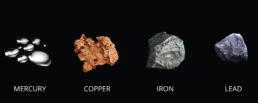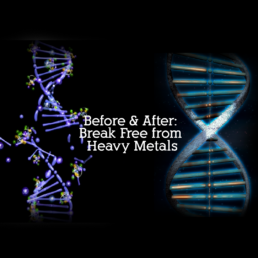Can chelation clear arteries? Heart health has long been at the forefront of today’s medical research. With an increasing number of individuals affected by cardiovascular diseases, there’s a growing interest in exploring alternative treatments. With one in four people dying from cardiovascular ailments, it’s no wonder.
One alternative treatment method that has gained attention over the years is chelation therapy. In this article, we will delve into the question: can chelation clear arteries? And where does Chelanox ( made by Bionox) fit into the equation?
What is Chelation Therapy?
Chelation therapy involves the administration of chelating agents to remove heavy metals and toxins from the body1. The most commonly used agent for this therapy is EDTA (ethylene diamine tetraacetic acid), which binds to metals like lead, mercury, copper, iron, and calcium, just to name a few.

Can Chelation Clear Arteries?
Several studies have explored the potential of chelation therapy in treating cardiovascular diseases and related issues. One such study, the Trial to Assess Chelation Therapy (TACT), found that chelation therapy could reduce cardiovascular events in patients with a history of heart attacks2. The study theorized that removing metals might help reduce oxidative stress, which plays a role in atherosclerosis.
The Role of Inflammation in Cardiovascular Diseases – How Chelanox Can Make a Difference
Inflammation is the body’s natural response to injury or infection, but when it becomes chronic, it can contribute to the development and progression of numerous diseases, including cardiovascular diseases (CVD). In this article, we will delve into the intricate relationship between inflammation, oxidative stress, and cardiovascular health, and how Chelanox can be instrumental in this equation.
Inflammation and Cardiovascular Diseases
Cardiovascular diseases can encompass a wide range of conditions affecting the heart and blood vessels, brain, lungs, and more. A large body of research has consistently linked chronic inflammation to the development of atherosclerosis, a condition where plaque builds up in the arteries, leading to heart attacks and strokes3.
Certain inflammatory markers, such as C-reactive protein (CRP), have been identified as predictors of cardiovascular events like heart attacks. Elevated levels of these markers suggest an ongoing inflammatory response that can damage arterial walls, making them more prone to plaque accumulation.
Oxidative Stress and Inflammation
Oxidative stress arises when there’s an imbalance between free radicals (unstable molecules that can damage your cells) and the body’s ability to counteract or detoxify their harmful effects. This imbalance can trigger inflammation. For instance, oxidized low-density lipoprotein (LDL) cholesterol is known to initiate an inflammatory cascade leading to the formation of atherosclerotic plaques2.
Reducing oxidative stress can, therefore, dampen inflammatory responses. Minimizing the cellular damage caused by free radicals can mitigate the inflammatory pathways contributing to cardiovascular diseases.
How Chelanox Addresses These Concerns
Chelanox, with its specially formulated ingredients, addresses inflammation and oxidative stress in several ways:
- Heavy Metal Detoxification: Heavy metals like lead and mercury can contribute to oxidative stress. By binding to and facilitating the removal of these metals, Chelanox reduces one of the sources of oxidative stress. With less toxic load, your body can respond to and heal better, quicker, and fuller.
- Boosting Nitric Oxide (NO) Production: Nitric oxide plays a crucial role in vascular health by promoting vasodilation (widening of blood vessels), improving blood flow, and reducing blood pressure4. A compromised nitric oxide synthase (NOS) pathway can lead to reduced NO production, contributing to endothelial dysfunction and inflammation. Chelanox supports the NOS pathway, enhancing NO production.
- Strengthening the Immune System: A healthy immune system can better regulate inflammatory responses. Some ingredients in Chelanox, such as NAC and antioxidants, support immune function, helping the body to respond appropriately to threats without tipping into chronic inflammation.

Let’s delve into each ingredient in Chelanox, focusing on their potential roles in combating oxidative stress and supporting chelation.
1. EDTA (Ethylenediaminetetraacetic Acid):
- Fights Oxidative Stress: EDTA can neutralize metal-induced oxidation by binding to metal ions.
- Supports Chelation: EDTA is a well-known chelating agent, particularly used for lead, calcium, and other heavy metal removal from the bloodstream.
We use acid-resistant capsules to ensure maximum EDTA absorption. This is very important to note!
2. Chlorella Algae:
- Fights Oxidative Stress: Chlorella contains antioxidants like chlorophyll, beta-carotene, and lutein.
- Supports Chelation: The cell wall of chlorella has been shown to bind with heavy metals and pesticides, facilitating their elimination. If you eat fruits, veggies, or grains, you probably have consumed high levels of pesticides and heavy metals.
3. Modified Citrus Pectin (MCP):
- Fights Oxidative Stress: MCP has antioxidant properties that may help combat oxidative stress.
- Supports Chelation: MCP has been found to reduce the body burden of certain heavy metals, including lead and mercury.
4. Cilantro Leaf Extract 4:1:
- Fights Oxidative Stress: Cilantro is rich in antioxidants that can neutralize free radicals.
- Supports Chelation: Some studies have suggested cilantro can facilitate the excretion of heavy metals like mercury.
5. Shilajit 10:1 Extract:
- Fights Oxidative Stress: Shilajit is rich in fulvic acid and other antioxidants.
- Supports Chelation: While direct chelation hasn’t been widely studied, Shilajit may help enhance the efficacy of other chelating agents.
6. Zeolite:
- Fights Oxidative Stress: Zeolites can help counteract free radicals.
- Supports Chelation: Zeolites have a cage-like structure that can trap and remove toxins, including heavy metals, from the body.
7. Glutathione Precursor Support Blend (Glutamic Acid, Cysteine, Glycine):
- Fights Oxidative Stress: This blend supports the synthesis of glutathione, a primary antioxidant in the body.
- Supports Chelation: Elevated glutathione levels can enhance the body’s ability to detoxify certain heavy metals.
8. Alpha Lipoic Acid (ALA):
- Fights Oxidative Stress: ALA can regenerate other antioxidants like vitamin C and vitamin E.
- Supports Chelation: ALA has been suggested to help remove certain metals, especially when used alongside other chelators.
9. Uva Ursi Leaf Powder:
- Fights Oxidative Stress: Contains arbutin, which has antioxidant properties.
- Supports Chelation: Not primarily known for chelation but may support overall detoxification processes.
10. Milk Thistle Seed Powder:
- Fights Oxidative Stress: Contains silymarin, which is an antioxidant and helps protect the liver.
- Supports Chelation: Milk thistle supports liver function, and a healthy liver plays a crucial role in detoxification.
- “What is Chelation Therapy?”. Mayo Clinic. https://www.mayoclinic.org/tests-procedures/chelation-therapy/about/pac-20394850 ↩
- Lamas GA, et al. “Effect of disodium EDTA chelation regimen on cardiovascular events in patients with previous myocardial infarction”. Circulation: Cardiovascular Quality and Outcomes. 2013. ↩
- Anderson TJ, et al. “The role of chelation in the treatment of other cardiovascular conditions”. American Heart Journal. 2014. ↩
- Libby, P. “Inflammation in atherosclerosis.” Nature, 2002. https://www.nature.com/articles/420868a ↩
- Madamanchi NR, Vendrov A, Runge MS. “Oxidative stress and vascular disease.” Arterioscler Thromb Vasc Biol, 2005. https://www.ahajournals.org/doi/full/10.1161/01.ATV.0000150649.39934.13 ↩
- Förstermann, U, & Münzel, T. “Endothelial nitric oxide synthase in vascular disease: from marvel to menace.” Circulation, 2006. https://www.ahajournals.org/doi/full/10.1161/CIRCULATIONAHA.105.602532 ↩
